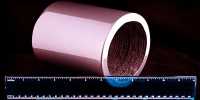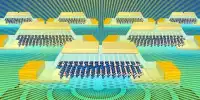The UAE is about to put an unusual, high-tech method of causing more rain to the test: flying drones into clouds and zapping them with electricity to cause showers. Scientists from England’s University of Reading assisted in the development of a series of drones that can fly up into existing clouds and alter the electrical charge of water droplets, causing them to clump together “like dry hair to a comb,” according to Reading scientist Maarten Ambaum. If it works, it could help replenish the dwindling water supply around major cities such as Dubai — and usher in a new era of human weather control.
The research looks into how charge affects the growth of tiny water droplets into larger drops that fall as rain. Because clouds naturally carry both positive and negative charges, changing the size of the charges may cause water droplets to grow and merge, resulting in rain.
The UAE’s National Center of Meteorology is conducting tests to see whether electricity can be used during cloud-seeding operations to enhance rainfall over the country, and mitigate water stress in arid regions.
Drones that fly into clouds and shock them with electricity to “cajole” them into producing rain are about to be tested in the UAE. The country already employs cloud-seeding technology, in which salt is dropped to encourage precipitation. However, with an annual rainfall of only 100mm in the UAE, the country wishes to generate more. In 2017, the government allocated $15 million (£10.8 million) to nine different rain-enhancement projects.
The pilots shoot flares that inject salts into the upper coldest portion of the clouds as they fly above the clouds. The process aids in the formation of water droplets that gradually grow in size by colliding with one another, a process known as coalescence by scientists. These droplets then begin to fall and form rain.

Closed Loop
The UAE already uses cloud seeding technology to induce condensation and create clouds, so the zapping drones would give the country even more control over the water cycle.
“Equipped with a payload of electric-charge emission instruments and customized sensors, these drones will fly at low altitudes and deliver an electric charge to air molecules, which should encourage precipitation,” said Alya Al-Mazroui, director of the UAE rain-enhancement science-research program.
Fill ‘Er Up
The use of weather modification systems is not without controversy. Cloud seeding has been around for decades, but experts are concerned about the technology’s potential misuse, particularly in China.
Cloud-seeding is typically accomplished by firing salt-crystal flares into the clouds from airplanes (or ground generators on mountain peaks). As the cloud absorbs the crystals, tiny particles of water collide and become heavier. The larger these condensed drops, the more likely it is that they will fall as rain. Researchers now hope to influence that process by tampering with the electrical charge carried by moisture in the clouds.
However, in this case, the weather-controlling technology has a clear use case of assisting in the provision of water to large desert cities that are at risk of depleting the water that is naturally available. “The water table in [the] UAE is sinking dramatically, and the purpose of this is to try to help with rainfall,” Ambaum told the BBC.
The method also enables researchers to use a smaller, lighter vehicle to deliver a charge into the clouds rather than the larger aircrafts that they are used to using. The NCM team is using drones outfitted with electrical instruments and customized sensors to see if they can change the size of electrical charges in the clouds to stimulate the growth of water droplets.
“Equipped with a payload of electric-charge emission instruments and customised sensors, these drones will fly at low altitudes and deliver an electric charge to air molecules, which should encourage precipitation,” Alya Al-Mazroui, director of the UAE’s rain-enhancement science-research program, told Arab News.
The study will then be evaluated in the hopes of receiving additional funding for a larger aircraft to deliver the payload in the future.
















